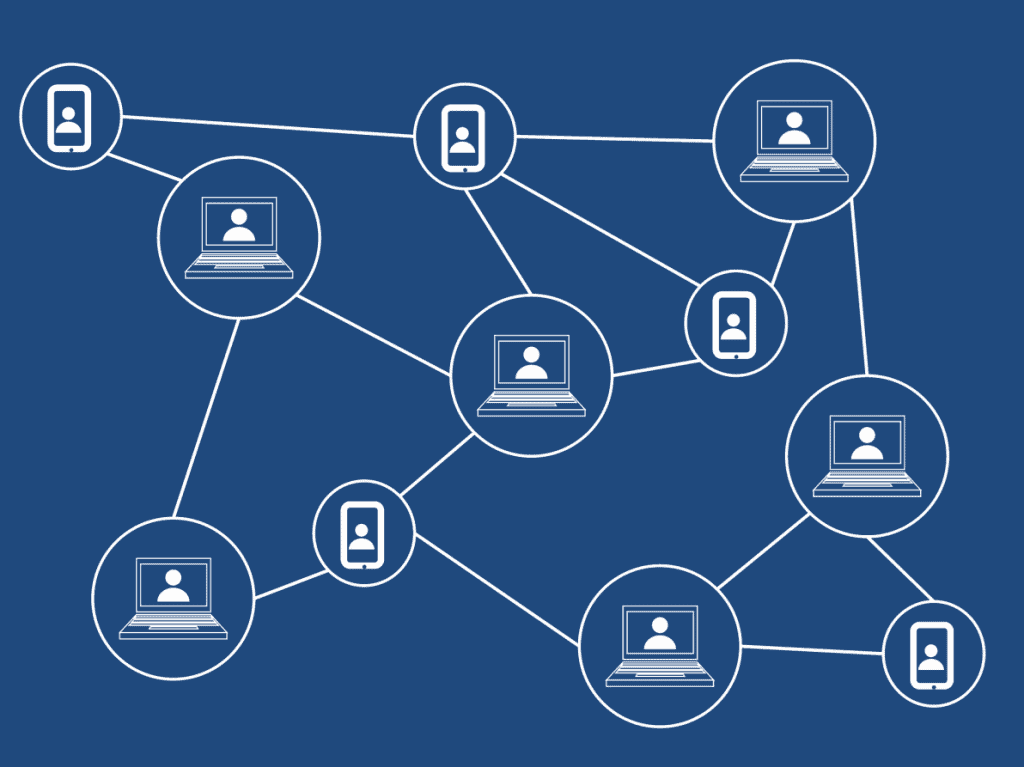A permissioned, distributed and open-source platform, Hyperledger is a blockchain technology built for global enterprises. It is an enterprise blockchain solution that provides a publically accessible network across myriad business applications. This community-focused collaboration came into being when Linux Foundation along with twenty-one other members realized the need for expanding traditional blockchain technology to provide real-world trust among enterprises so that they can carry out their business processes in a neutral and trust-based environment.
What does Hyperledger do?
Hyperledger provides different specifications, tools, protocols, libraries, and standards, (called frameworks) for connecting business networks worldwide. The Hyperledger projects are based on enterprise-ready platforms where network participants are already known (unlike blockchain networks where node validation is required) and have a common interest. Apart from acting as distributed ledger frameworks, Hyperledger also provides smart contract engines and client and utility libraries globally. The leaders from the fields of Artificial Intelligence, IoT, finance, real estate, health care, and supply chain have become active participants of Hyperledger technology. This includes leading companies like Samsung, IBM, ConsenSys, Microsoft, JP Morgan, and Visa, among others.
Being an open-source network, Hyperledger is available for free for everyone to view, edit, and copy the code. It is available for free redistribution and contribution among member participants.

Hyperledger Functionalities
- To provide enterprise-wide business collaboration for providing distributed ledger blockchain technology that can work seamlessly among participating organizations.
- To raise scalability, efficiency, and performance of business processes across different industrial sectors.
- To minimize the cost of doing business. As Hyperledger is a permissioned blockchain technology, participants are authenticated using an identity module, thus reducing the complexities of a traditional blockchain system.
- To develop distributed, open-source code and an interoperable ecosystem to be used by enterprises all around the world.
- To provide community-driven infrastructure.
- To utilize the toolkit approach for promoting a community-driven network and educate the participants of its frameworks, use cases, and deployments in a trustful manner.
- To address the scalability issue inherently present in other distributed ledger technologies.
How does the Community Work in Hyperledger?
Hyperledger has been built as an open-source community that runs on an open governance model.
Project Contribution
- Users: Hyperledger users can propose new features and enhancements to a project. They can test epic stories on JIRA and can report bugs.
- Developers: This model lets the community select from a set of active participants a few developers who then are responsible for the technical decisions required for the community projects. Developers are responsible for what, why, and how of the project implementation process. They are responsible for fixing issues and commit to the developments of the project.
Project Governance
- Maintainers: Project governance is largely handled by a set of people called maintainers, who are either are initial maintainers as they have been associated with the project since came into being, or maintainers that have selected by these initial maintainers to contribute to the project governance. They are selected based on their project contribution in past. The action of maintainers is public and transparent. They review the patches submitted and finally merge them.
The standards set by the Technical Steering Committee (TSC) are followed upon by the maintainers and at any point in time, if any maintainer does something wrong, the other maintainers can decide to reverse his actions. They can approve pull and commit requests and can contribute to the source code. - Technical Steering Committee: The TSC decides the roadmap of the projects and consists of developers who have been selected by all the contributors. Technical Committee makes sure that the projects are in an excellent state of health and are carried out to successful completion.
Project Life Cycle in Hyperledger
Hyperledger community members contribute to a project to ensure a structured workflow. The different stages in a project life cycle in a Hyperledger project are:
- Proposal: A Hyperledger project initiative is first proposed to the Technical Steering Committee which reviews it and approves it if the open-source initiative is clearly stated and has a well-defined scope. The initiative also clearly mentions the set of developers and maintainers to be associated with the initiative.
- Incubation: Post approval of the open-source initiative by the committee, the project enters a phase called Incubation, in which ideas related to the project and technology development are discussed. The incubation phase aims at laying the foundation of a fully functional project.
- Active: While in the Incubation phase, the project maintainers present their vote to Technical Steering Committee to change the project phase to “Active”. A project enters the Active phase only if it has been mature enough, has a functional code to run, and has an active community.
- Major Release: The Technical Steering Committee approves the first major release of an active project.
- Deprecated: A project that is not to be released is rendered deprecated. A deprecated project is maintained for six months post which it reaches its end of life.

Hyperledger Labs
Hyperledger Labs is used for testing the experimental ideas and includes those projects that are either active or have incomplete code or are being carried for innovative purposes. Community members can propose a new Lab idea while following the suggested guidelines and needs to work within a pre-defined framework. If a new lab is dormant for six months or more, it is considered deprecated.
Why are Enterprises Looking Forward to it?
- The open-source model of the Hyperledger network lets communities develop projects using common building blocks based on trust. This allows communities to develop projects across industries seamlessly.
- By using smart contracts, business processes can be easily automated.
- Hyperledger minimizes the centralization of the system across enterprises by letting these systems integrate so that they can act as a common system record. Being permissioned, an enterprise acts as a common frame of reference for carrying out the transactions and other organization-related processes.
- Hyperledger ensures scalability and throughput, factors that are must-haves for an enterprise that uses blockchain technology. It lets companies adopt a modular approach to software development and lets organizations customize their tools as per requirements.
- It helps build a common software ecosystem for different sectors including finance, supply chain, trade, retail, and others.
- As enterprises are moving to decentralized Distributed Ledger Networks (DLTs), security is a big concern. Hyperledger lets users have plug-and-play features to keep the data protected on the blockchain. It lets you keep your sensitive data off-chain to avoid any malicious attacks. Instead of displaying the data to everyone on the blockchain, the data remains within the parties interested in data sharing.

Anuradha is a Technical Writer based in New Delhi. She pens articles on SAAS and other cloud technologies. She finds blockchain technology interesting enough. A dreamer by nature.

